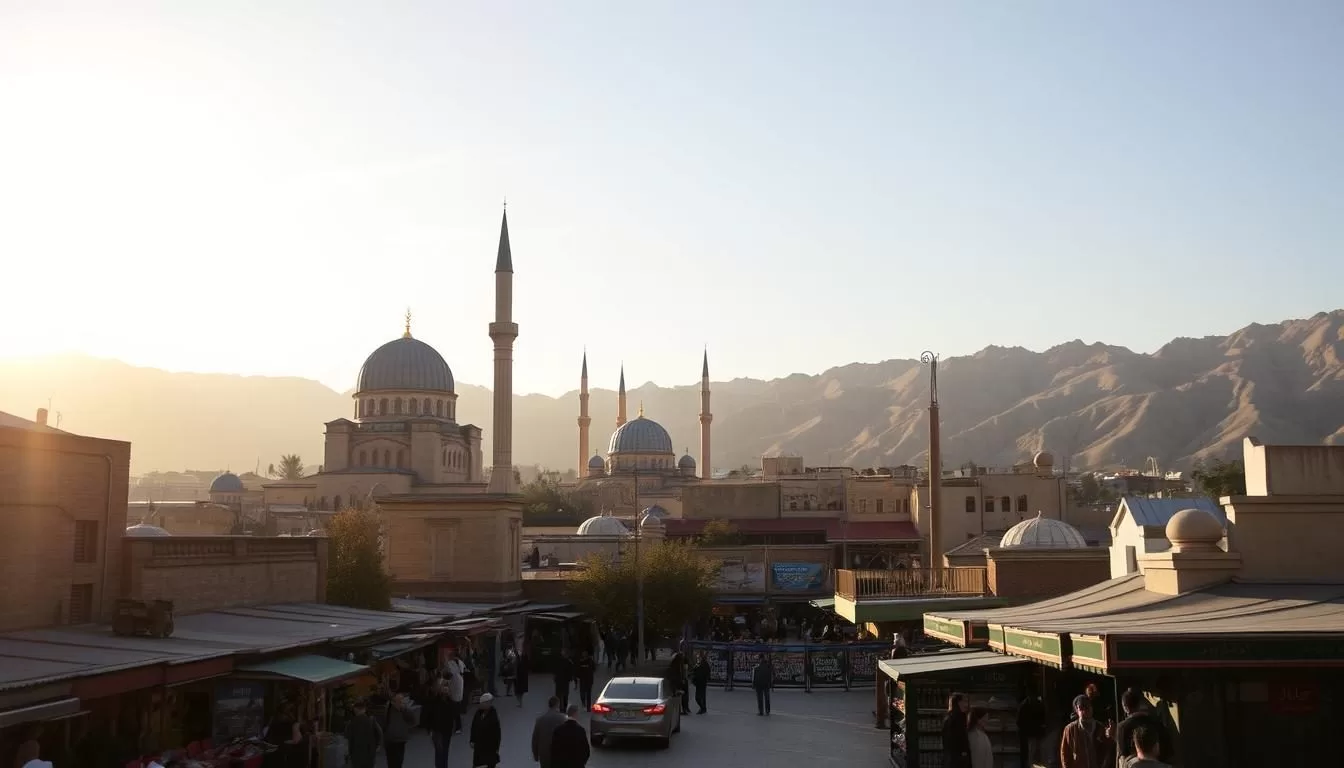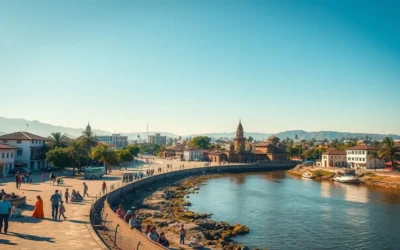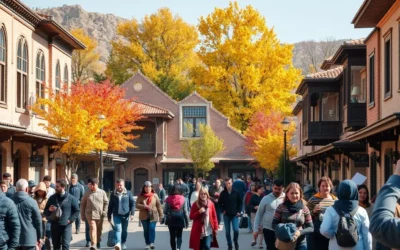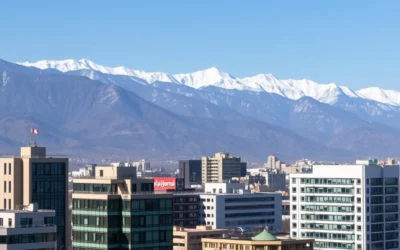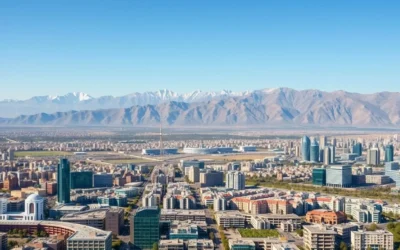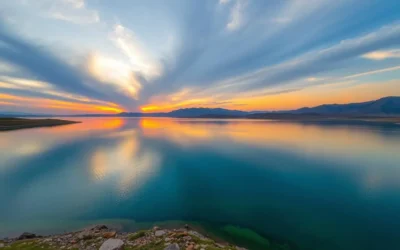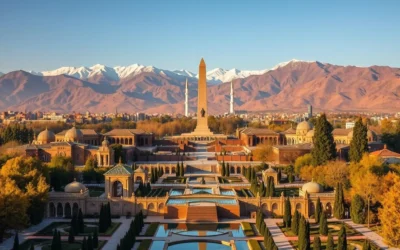✓ Accommodations✓ Flights✓ Rental Cars
Nestled in the southeast region of Iran, Kerman is one of the country’s largest cities, offering a unique blend of ancient history and modern attractions. With its stunning architecture, vibrant bazaars, and breathtaking desert landscapes, this city promises an unforgettable experience for every visitor.
From the sprawling Shahzadeh Mahan Garden, a UNESCO World Heritage site, to the iconic Bam Citadel, the largest adobe building in the world, Kerman is a treasure trove of cultural and historical wonders. Whether you’re exploring the bustling Grand Bazaar or marveling at the ancient Jabaliyeh Dome, there’s something for everyone to enjoy.
Plan your trip to this remarkable city and discover its rich heritage, vibrant culture, and natural beauty. Kerman invites you to step into a world where history comes alive, and every day brings a new adventure.
Embrace Kerman’s Timeless History
Founded by Ardashir I, Kerman has been a cultural crossroads for centuries. Its roots date back to the 3rd century, making it a cornerstone of Persian history. This ancient city has witnessed the rise and fall of empires, leaving behind a legacy that continues to captivate visitors today.
Ancient Foundations and Cultural Legacies
Kerman’s architecture reflects its rich past, with stone buildings and intricate designs that have stood the test of time. The city’s strategic location made it a hub for trade routes, connecting it to distant regions. Marco Polo even mentioned its bustling markets, highlighting its importance during that period.
Over the centuries, Kerman has evolved, blending Persian traditions with influences from neighboring areas. Its cultural legacies are evident in the craftsmanship of its buildings and the stories passed down through generations. Every corner of the city tells a tale of resilience and innovation.
Historic Landmarks and Trade Routes
Kerman’s historic landmarks are a testament to its enduring significance. From ancient fortresses to grand mosques, each structure showcases the design and artistry of its time. The city’s trade routes once brought goods from across the region, fostering a vibrant exchange of ideas and cultures.
As you explore Kerman, you’ll discover how its past continues to shape its present. The blend of stone and sand in its buildings reflects the natural beauty of the area. This city invites you to step back in time and experience its timeless charm.
Explore the UNESCO Heritage of Shahzadeh Mahan Garden
A lush oasis in the heart of the desert, Shahzadeh Mahan Garden is a marvel of design and engineering. This Persian garden, spanning over 5 hectares, is a UNESCO World Heritage site and a testament to the ingenuity of its creators. Its tranquil setting, with ponds, fountains, and rocky streams, offers a peaceful retreat from the surrounding arid landscape.
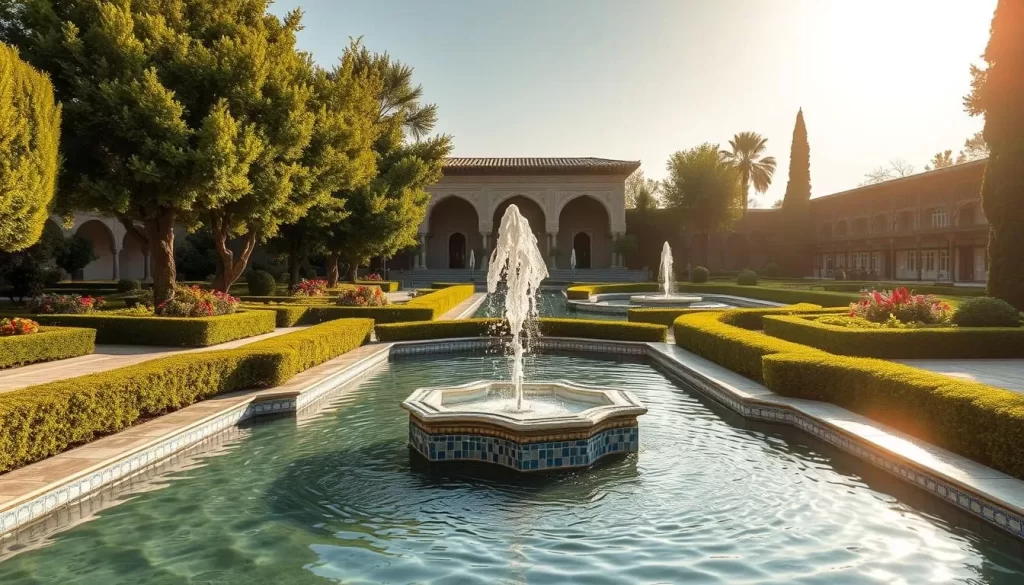
Qajar Period Marvel
Built during the Qajar period, Shahzadeh Mahan Garden reflects the elegance and sophistication of its time. Its origins date back to the 19th century, showcasing the architectural brilliance of that era. The garden’s layout, with its symmetrical pathways and lush greenery, is a perfect blend of aesthetics and functionality.
Design, Water Systems, and Tranquility
The garden’s design is a harmonious fusion of nature and human creativity. Its sophisticated water systems, fed by the Tigran aqueduct, are a marvel of engineering. The gentle sound of flowing water adds to the serene atmosphere, making it a perfect spot for relaxation and reflection.
Shahzadeh Mahan Garden is not just a feast for the eyes but also a testament to the region’s historical significance. Its restoration after the 1982 earthquake highlights the resilience and dedication to preserving this cultural gem. Whether you’re a history enthusiast or a nature lover, this garden offers an unforgettable experience.
| Feature | Details |
|---|---|
| Area | 5.5 hectares |
| Length | 407 meters |
| Width | 122 meters |
| UNESCO Listing | 2011 |
Plan your trip to Shahzadeh Mahan Garden and immerse yourself in its timeless beauty. This oasis in the desert is a must-visit for anyone seeking a blend of history, nature, and tranquility.
Discover the Wonders of Bam Citadel
Step into the heart of history at Bam Citadel, a testament to human ingenuity and resilience. This massive adobe fortress, recognized as the largest of its kind in the world, is a UNESCO World Heritage site. Its origins trace back to the Achaemenid period, around the 6th to 4th centuries BC, showcasing centuries of architectural brilliance.
The citadel’s heyday was between the 7th and 11th centuries, when it thrived as a fortified town. Its ingenious design includes walls, towers, gates, and even a mosque, reflecting the advanced planning of its time. For centuries, it stood as a symbol of strength and cultural exchange.
Architectural Ingenuity and Restoration
On December 26, 2003, a devastating earthquake nearly destroyed Bam Citadel. The event shook the region, but it also sparked a remarkable 15-year restoration effort. Today, 99% of the project is complete, preserving this historic attraction for future generations.
The restoration highlights the citadel’s resilience and the dedication to safeguarding its legacy. Visitors can now explore its layered history, from its ancient foundations to its modern revival. The blend of old and new makes it a must-visit for anyone interested in architecture and culture.
“Bam Citadel is not just a structure; it’s a story of survival and rebirth.”
Plan your trip to Bam Citadel and witness the harmony of ancient ingenuity and modern restoration. This iconic site offers a unique glimpse into the past while inspiring hope for the future.
Stroll Through the Vibrant Kerman Grand Bazaar
Step into a world of vibrant colors and rich traditions at the Kerman Grand Bazaar. This historic marketplace, tracing back to the 8th century AH, is a living relic of ancient commerce. Its bustling corridors invite you to explore a place where history and culture come alive.
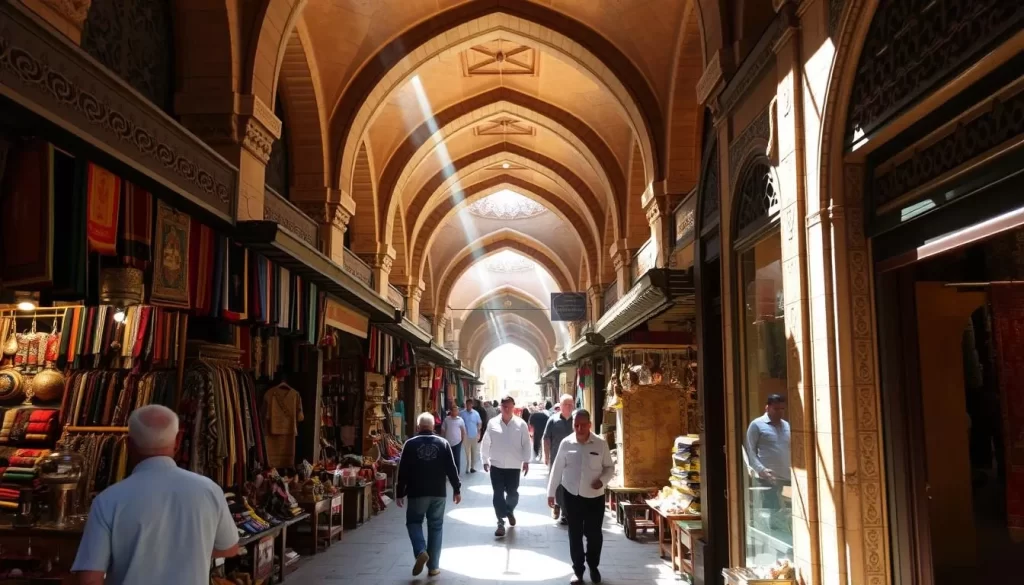
The bazaar’s design reflects its centuries-old heritage, with stone arches and intricate details that tell stories of a bygone era. As you wander through its passages, you’ll encounter the gold and copper alleys, each offering a unique glimpse into traditional craftsmanship.
Historic Passages and Traditional Commerce
The Kerman Grand Bazaar is more than just a marketplace—it’s a sensory journey. The air is filled with the aroma of spices like cumin, while the sounds of haggling and laughter create a lively atmosphere. This is a place where visitors can immerse themselves in the local culture and traditions.
Traditional commerce thrives here, with merchants selling everything from handwoven textiles to intricate jewelry. The exchange of goods is not just a transaction but a cultural experience. Each stall tells a story, connecting the past with the present.
Plan your trip to the Kerman Grand Bazaar and discover its timeless charm. Whether you’re a history enthusiast or a curious traveler, this bazaar offers an unforgettable experience that will leave you inspired.
Admire the Splendor of the Ganjali Khan Complex
Step into a world of architectural brilliance at the Ganjali Khan Complex, a masterpiece of Safavid design. Built in the 17th century, this historic site stands as a testament to the artistic and cultural achievements of its time. Its intricate tile work, grand structures, and multifunctional spaces make it a must-visit attraction.
Intricate Tile Work and Safavid Architecture
The Ganjali Khan Complex is renowned for its exquisite tile work and calligraphy. Every corner of the complex showcases the craftsmanship of the Safavid period. The bathhouse, mosque, and caravanserai are adorned with vibrant patterns and geometric designs, reflecting the artistic brilliance of the era.
As you explore, you’ll notice how the design seamlessly blends functionality with beauty. The bathhouse, for instance, features heating systems and water channels that highlight the ingenuity of its creators. This fusion of art and practicality is what makes the complex truly unique.
Anthropology Museum and Cultural Insights
In 1971, the bathhouse was transformed into an anthropology museum, offering a glimpse into local traditions and lifestyles. The exhibits include artifacts, clothing, and tools that tell the story of the region’s rich heritage. It’s a place where history comes alive, connecting visitors to the past in a meaningful way.
The Ganjali Khan Complex is more than just a historical site; it’s a cultural hub. Its transformation into a museum ensures that its legacy continues to inspire future generations. Whether you’re an art enthusiast or a history buff, this complex offers an unforgettable experience.
Plan your visit to the Ganjali Khan Complex and immerse yourself in its timeless beauty. From its stunning architecture to its cultural insights, this site is a treasure trove of history and artistry.
Experience the Mystical Meymand Rocky Village
Step into a timeless world at Meymand Village, where history and life intertwine in a unique way. This extraordinary place, nestled in the heart of Kerman province, offers a glimpse into a lifestyle that has remained unchanged for thousands of years. Its cave dwellings, carved into the rocky terrain, are a testament to human ingenuity and resilience.
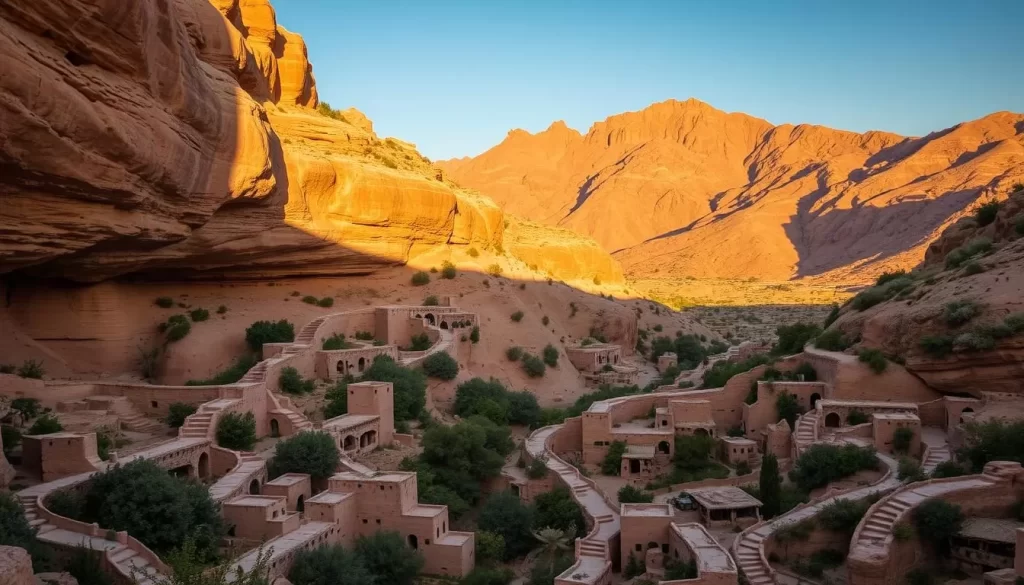
Cave Dwelling Heritage
Meymand Village is a living museum of architecture, showcasing troglodyte homes that date back over 2,000 years. These hand-carved caves, some of which are still inhabited today, reflect the intimate connection between the villagers and their natural surroundings. The design of these dwellings is both functional and awe-inspiring, blending seamlessly with the rocky landscape.
Living Traditions in a Timeless Setting
What makes Meymand truly special is its living traditions. The villagers continue to practice ancient customs, offering visitors a rare opportunity to experience a way of life that has endured for centuries. From cultural rituals to daily rhythms, every aspect of their existence is deeply rooted in their history.
This UNESCO Cultural Landscape is not just an attraction; it’s a place where the past and present coexist harmoniously. Whether you’re exploring the caves or interacting with the locals, Meymand Village promises an unforgettable journey through time.
- Discover the ancient origins of troglodyte architecture.
- Witness traditional lifestyles that have persisted for millennia.
- Immerse yourself in the cultural rituals of the villagers.
- Experience the natural beauty of this rocky site.
Plan your visit to Meymand Village and step into a world where history comes alive. This hidden gem in Kerman province is a must-see for anyone seeking a deeper connection to the past.
Kerman, Iran: Best Things to Do – Top Picks
From its ancient roots to its vibrant present, this city offers a journey through time and culture. Whether you’re drawn to its historic landmarks or its stunning desert landscapes, there’s something for every visitor to enjoy.
Explore the UNESCO-listed Shahzadeh Mahan Garden, a lush oasis in the heart of the desert. Its intricate water systems and tranquil setting make it a must-see attraction. Step into the past at Bam Citadel, the largest adobe building in the world, and marvel at its architectural ingenuity.
Stroll through the vibrant Grand Bazaar, where the air is filled with the aroma of spices and the sounds of traditional commerce. This historic marketplace is a living relic of ancient trade routes. Don’t miss the Ganjali Khan Complex, a masterpiece of Safavid architecture, with its intricate tile work and cultural insights.
“Kerman is a city where history and nature come together in perfect harmony.”
For a unique experience, visit Meymand Village, where cave dwellings and living traditions offer a glimpse into a timeless way of life. Each attraction tells a story of resilience and innovation, making this region a treasure trove of cultural wonders.
Plan your trip to Kerman and immerse yourself in its rich heritage and natural beauty. From its historic gardens to its bustling bazaars, this city promises an unforgettable journey.
Marvel at the Natural Wonders of the Lut Desert
The Lut Desert offers a surreal escape into a world shaped by nature’s raw power. Recognized as a UNESCO World Heritage site, this vast expanse is a testament to the earth’s dramatic transformations over time. Its unique landforms and extreme climate make it a must-visit for adventurers and nature enthusiasts alike.
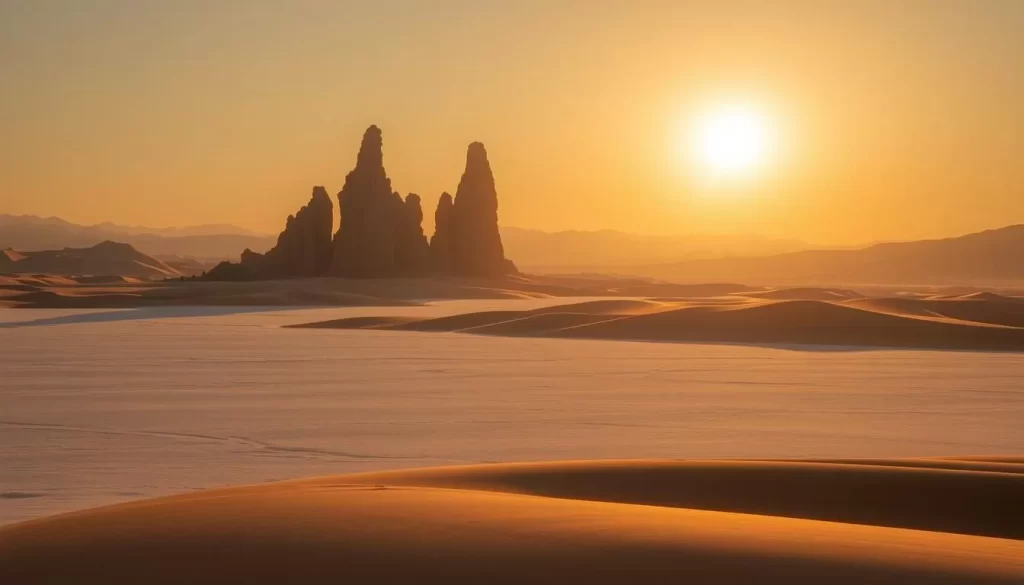
Kaluts of Shahdad: Nature’s Masterpiece
The Kaluts of Shahdad are a highlight of the Lut Desert. These wind-sculpted ridges, formed over centuries, create an otherworldly landscape. The sharp, jagged formations stretch for miles, offering a glimpse into the power of natural forces.
Walking through the Kaluts feels like stepping onto another planet. The silence and vastness of the desert amplify the sense of awe. It’s no wonder this area attracts photographers and scientists from around the world.
Mars-like Gandom Beryan Landscapes
Another marvel of the Lut Desert is Gandom Beryan, known for its Mars-like terrains. This area holds the record for the hottest surface temperature on earth, making it a place of extreme conditions and scientific interest.
The barren, cracked earth and reddish hues create a landscape that feels alien yet captivating. It’s a reminder of the earth’s diverse and unpredictable nature.
- Explore the wind-shaped ridges of the Kaluts.
- Witness the extreme temperatures of Gandom Beryan.
- Capture the surreal beauty of these natural wonders.
Plan your visit to the Lut Desert and immerse yourself in its timeless beauty. For more insights into this region, check out this Kerman, the capital of Kerman Province guide. This desert promises an unforgettable journey into the heart of nature.
Delve into Traditional Crafts and Culinary Delights
From handwoven carpets to flavorful pistachios, Kerman’s crafts and cuisine are a feast for the senses. This region is a treasure trove of cultural artistry and gastronomic wonders, offering a unique glimpse into its heritage.
Handwoven Carpet Artistry
Kerman is renowned for its exquisite handwoven carpets, a craft that dates back centuries. These carpets are not just functional items but works of art, showcasing intricate patterns and vibrant colors. Each piece tells a story, reflecting the skill and dedication of the artisans.
The process of creating these carpets is meticulous, involving hours of labor and attention to detail. From selecting the finest wool to dyeing it with natural pigments, every step is a testament to the region’s artisanal heritage. Owning a Kerman carpet is like holding a piece of history in your hands.
Famous Pistachios and Local Flavors
No visit to Kerman is complete without savoring its famous pistachios. Known for their rich flavor and quality, these nuts are a staple of the region’s agricultural produce. Whether enjoyed raw or as part of a dish, they are a true delight for the palate.
Kerman’s culinary scene is deeply rooted in Persian cuisine, with dishes that highlight local ingredients and traditional techniques. From aromatic stews to fragrant rice dishes, every meal is a celebration of flavor and culture.
As you explore the abad garden or stroll through local markets, take the time to appreciate the artistry behind these crafts and the flavors that define this place. Kerman’s traditions are a window into its soul, inviting you to connect with its rich heritage.
Immerse Yourself in Contemporary Arts and Museums
Kerman’s modern art scene is a vibrant blend of tradition and innovation, offering a fresh perspective on its cultural heritage. The city’s contemporary arts museums are a must-visit for anyone looking to explore its creative spirit. These spaces harmonize historical traditions with modern artistic expressions, creating a dynamic cultural dialogue.
Sanati Contemporary Arts Museum Highlights
The Sanati Contemporary Arts Museum is a cornerstone of Kerman’s art scene. It houses an impressive collection of works from over 80 Iranian artists and several international creators. The museum’s architectural design enhances the artistic experience, blending modern aesthetics with traditional elements.
Visitors can explore a variety of mediums, from paintings to sculptures, each telling a unique story. The museum also features a significant collection from Master Seyed Ali Akbar Sanati, adding depth to its offerings. This arts museum is a place where the past and present coexist, offering a rich cultural experience.
Harandi Museum Complex
Another gem in Kerman’s art landscape is the Harandi Museum Complex. This museum showcases a diverse range of artworks, highlighting the region’s artistic evolution. Its exhibitions are thoughtfully curated, providing insights into both local and global art trends.
The complex’s architecture is a work of art in itself, with spaces designed to inspire and engage. Whether you’re an art enthusiast or a curious visitor, this attraction offers something for everyone. It’s a testament to Kerman’s commitment to preserving and promoting its cultural heritage.
| Museum | Highlights |
|---|---|
| Sanati Contemporary Arts Museum | Works from 80+ Iranian and international artists |
| Harandi Museum Complex | Diverse exhibitions and inspiring architecture |
Plan your visit to these contemporary arts museums and immerse yourself in Kerman’s vibrant art scene. For more travel tips, check out this ultimate Iran travel guide to make the most of your trip. These museums are not just a place to see art—they’re a journey into the heart of creativity.
Step into Kerman’s Architectural and Religious Legacy
Discover the spiritual and architectural wonders that define Kerman’s rich heritage. This city is home to sacred sites and ancient structures that tell stories of faith, craftsmanship, and cultural evolution. From historic mosques to fire temples, each landmark offers a glimpse into the region’s profound history.
Historic Mosques and Fire Temples
Kerman’s historic mosques are a testament to its spiritual legacy. The Malek Mosque, dating back to the 10th century, is the largest in the city and showcases intricate stone craftsmanship. Its grand design reflects the architectural brilliance of its time.
Another iconic site is the Kerman Zoroastrian Fire Temple, the only anthropological museum of its kind in the world. The sacred fire here has been maintained for thousands of years, symbolizing the enduring traditions of the Zoroastrian community.
Ancient Dome Structures and Cultural Sites
Kerman’s ancient domes are marvels of engineering and artistry. The Jabaliyeh Historical Dome, believed to date back to the Seljuk or Sassanid periods, is a prime example. Its unique construction, possibly using camel milk, highlights the ingenuity of its creators.
The Shah Nematollah Vali Shrine is another must-visit place. This mystical site attracts visitors with its serene atmosphere and intricate tile work. It’s a place where history and spirituality intertwine, offering a peaceful retreat for reflection.
| Site | Key Feature |
|---|---|
| Malek Mosque | Largest mosque in Kerman, 10th century |
| Kerman Zoroastrian Fire Temple | Only anthropological museum of its kind |
| Jabaliyeh Historical Dome | Unique construction, possibly using camel milk |
| Shah Nematollah Vali Shrine | Mystical appeal, intricate tile work |
These landmarks are not just architectural feats but also cultural hubs that connect the past with the present. Whether you’re exploring the desert or strolling through the city, Kerman’s religious and architectural legacy invites you to reflect on its timeless beauty. For more travel insights, check out this two-week Iran itinerary to plan your journey.
Conclusion
Every corner of this city reveals a new layer of its rich history and vibrant culture. From the ancient citadels to the serene gardens, each attraction tells a story of resilience and beauty. The blend of bustling bazaars and peaceful desert landscapes creates a magical world of discovery.
Take an hour to reflect on the wonders you’ve explored, from the wind-sculpted ridges of the Lut Desert to the lush oasis of Shahzadeh Mahan Garden. These experiences offer a unique glimpse into the world of this remarkable region.
Plan your day to immerse yourself in the blend of history, art, and nature. For more travel tips and deals, visit this guide to make the most of your journey. Every step in this city promises an unforgettable adventure.
The above is subject to change.
Check back often to TRAVEL.COM for the latest travel tips and deals.
